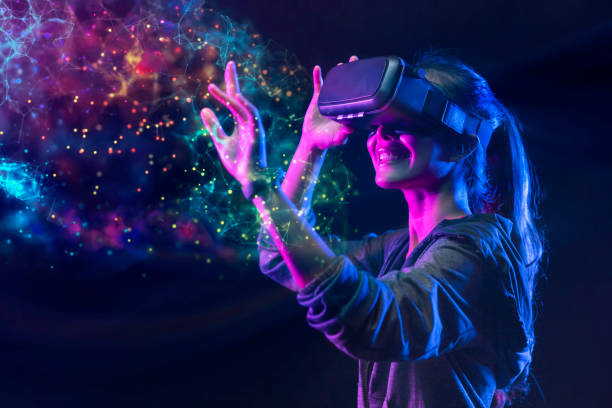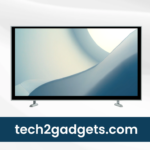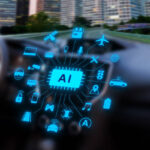VR and AR app development are at the cutting edge of technological innovation, offering limitless possibilities in different sectors. While these technological advancements continue gaining popularity, skilled developers’ part in shaping our digital future is becoming more critical. Many people believe AR/VR technology is for playing games, but this isn’t true. The immersive AR VR App Development Services can boost productivity, simplify the business process, and boost the customer experience.
However, what does this mean for companies looking to create internal applications that can be used for many purposes? What exactly does it cost to get into the world of immersive technology? Once you’re there, what sort of cost is related to maintenance, upkeep, and even support in the future?
In this post, we’ll tackle some of the concerns and give you a firsthand view of the cost associated with creating VR and AR apps. This will help you, the customer or business executive, understand the costs to be aware of when you quote the cost of developing your own applications.
It’s not an easy method to define, but in the interest of simplicity, there are plenty of ballparks to keep the process brief. Depending on the exact needs, Prices can vary based on complexity and size. If you’ve got some idea or a framework for your plan to create, a rough estimate of development is likely.
What Is AR & VR Technology?
Augmented Reality (AR) and Virtual Reality (VR) are advanced technologies that provide users with immersive and interactive experiences. AR is a combination of computer-generated graphics along with sound and other inputs from the sensory system into the user’s real-world experience. AR allows users to engage with virtual objects while still in touch with the environment. AR is typically experienced using smart glasses, mobile phones, and display heads-up.
Virtual Reality (VR) creates an artificial digital world that fully immerses users in the experience while removing the actual world. The development of VR apps typically includes wearing a head-mounted display (HMD) that covers your eyes and may also include motion-tracking controllers or devices for interaction. The users feel like they are in the virtual environment and can explore and interact with the virtual world and objects in a highly immersive way. VR can be used in games as well as training simulations. It also offers virtual tours, therapy, and entertainment.
AR and VR advancement technologies could revolutionize the world of education, healthcare, architecture, entertainment, and other industries with immersive and unique experiences that go beyond conventional media formats. They offer possibilities for communication, visualization, and interaction. They also allow users to explore and engage with digital media in new and captivating ways.
Advantages Of AR
Let’s take a look at a few of these AR advantages.
Enhances Customer Experience
AR has revolutionized the way customer interaction used to be earlier. Since the introduction of AR technologies, AR retailers have allowed their customers to engage with virtual components at any time. This means that customers can use their smartphones to point at something, for instance, a building, and the application overlays information from the digital world onto the actual world. Additionally, AR provides a try-before-you-buy chance for buyers to experience things virtually.
Increased Engagement
One of the main positive aspects of AR is that it encourages customers to engage with the brand. In addition, modern-day customers like to purchase from brands they are connected to. AR improves customer engagement because it helps keep customers engaged with your products. Utilizing AR for your business allows you to connect with your digital content and provide an enjoyable experience for your customers beyond just looking at the display.
Competitive Differentiation
Incorporating AR into your company activities can help you gain an edge in the market. If a variety of brands provide homogeneous items at the same price, it’s the perfect time to establish your company apart from the rest. AR assists you in positioning your company in a different way, as it lets you connect with your customers, offer distinctive experiences, and make your company unforgettable.
Immersive Training
Each business wants to provide its employees with better resources through intensive education. Many organizations do not have the resources to organize employee training sessions. For example, when you’re training your workers in the manufacturing industry, businesses must be able to afford sufficient funds for workshops to boost the workers’ performance.
Using AR solutions, you can enhance the skills of your workforce without requiring huge equipment or a large budget. Employees can see and participate in the training sessions. In addition, organizations can utilize interactive assessment tools that use AR to evaluate the effectiveness of their training programs. This is why AR allows organizations to offer engaging training for their employees.
Advantages Of VR
Let’s look at some of the VR benefits-
Revolutionizes The Try-Before-You Product
When you are online, offering customers an opportunity to experience the goods before purchasing is becoming increasingly difficult. Through the use of VR, users have the chance to test products before buying. VR extends the idea of purchasing before trying by providing consumers with an exclusive experience with the product.
Introduces Established Products To New Audiences
A new benefit of VR is the ability to take product presentations to the next level. It’s an excellent method of showcasing items to interested customers and giving them an immersive buying experience. Companies establish a connection with their clients, while customers benefit from watching information in a secluded environment.
Learning Becomes Fun With VR
The biggest advantage of VR is that it has made it hard for children to grasp STEM topics prior to the advent of VR. VR can make dry and abstract concepts more interesting and attractive to students. It improves education by altering the method by which students learn topics of the humanities and arts.
Effective Prototyping
Since the development of virtual technology, companies can create prototypes and test products less expensively and more quickly than ever before. Product prototyping can be taken to an entirely new degree by creating and reviewing 3D models and modifying them in a simulated environment, which helps reduce the need to create physical prototypes.
Use Cases Of VR And AR App Development
AR VR App Development Solution can be applied across many sectors and applications; some notable examples are:
E-commerce And Retail
AR-based apps could transform the shopping experience, offering customers the chance to try on clothes in virtual reality, imagine furniture at home, or observe how cosmetics appear on their faces. In contrast, VR can create virtual showrooms or stores where customers can interact and explore the products realistically.
Entertainment And Gaming
AR and VR have revolutionized the game industry, enabling immersive experiences. Mobile games can be placed on top of the actual environment (AR) or take players into virtual reality (VR), providing exciting experiences.
Education And Training
AR and VR are highly beneficial for training and education. The ability to visualize complicated concepts can help students learn with greater ease, and professionals can experience real-life simulations to improve their skills. From anatomy courses to flying simulations, AR and VR can bring education to life.
Healthcare And Medical Simulations
AR and VR have applications for medical education, surgical simulations, and even patient care. Surgeons can practice complicated procedures within a secure VR environment, and patients can benefit from interactive visualizations of their ailments.
Real Estate And Interior Design
AR and Virtual Reality app development enable clients to walk through homes virtually, see renovations in progress, and test the designs. These tools help realtors and interior designers show off their products, allowing potential clients to experience a full-immersion preview.
Virtual Reality Development Costs 2024
The cost of VR app development depends on the type of content that you wish to develop. There are times when you require an application for mobile VR or seek a VR game. Specific applications are built using simple 360 videos; others can be developed with a complete CG-based environment. The size and complexity are likely to affect the overall cost of development.
- 360-3D Interactive Video costs $ 10,000 for every minute filmed plus post-production.
- Environment applications based on CG between $50k and $70k for a standalone non-gaming VR-based application.
- Interactive CG Applications between $150k and $200k to create interactive, long-lasting, and multiplayer VR experiences.
These are just estimates. They’ll provide you with a decent basis for your work and an understanding of the expected results when quoting the details of your specific project.
Augmented Reality Development Costs 2024
AR application development is similar to VR development but requires less overall effort. Most of the time, it’s much more than 3D objects that are overlaid on actual reality.
Marker-Based Augmented Reality
A marker-based AR, also known as Image Recognition AR, offers more information on objects that have been imaged once the user focuses on a marker that has been pre-defined or labeled. The object is identified using cameras facing forward, and the display displays a display on the subject.
It allows on screen users to observe the object with greater depth from different angles and possibly rotate the image in 3D. Marker-based AR is priced between $5-10k. 3D modeled object interaction, as well as the user interface
Predefined Room Scale Augmented Reality
The predefined room-scale AR application allows users to enter a pre-scanned space. It will then add a visual style that shows the different objects laid out within the space. This can be useful in retailers or areas with numerous waypoints and objects requiring a definition. It is pre-defined. AR relies on reading data from a smartphone’s GPS Digital compass, digital compass, and accelerometer and then predicting the direction in which the viewer is.
Augmented reality is about putting data about location to the display regarding the objects the device’s camera can observe. Room Scale AR is priced between $40-$50k for each room based upon the amount of objects.
Plane Projection / Gyroscopic Augmented Reality
This type of AR can allow users to determine if there are any flat surfaces and utilize that surface as an origin or pivot point for displaying the 3D model created by the user or object. After the plane is established, the user is able to modify a 3D object in various ways and interact with it. Plane Projection or Gyroscopic AR cost: $15-20k for a 3D object, based on the level of interaction.
Wearable Based Augmented Reality
This type of AR needs specific equipment for overlaying things in the user’s eye using a wearable device. This permits deeper visuals and a field of vision that can be seen anywhere the user’s eyes are. Wearable-based AR Costs range from $50 to 100k to develop fully-fledged AR applications.
Many apps need additional capabilities beyond those described above and AR development. These capabilities usually include pricing for certain features like Login, payment integration, analytics tools, updates and support, and hardware.
Factors Affect VR And AR Development Cost
Estimating the development costs of AR and VR will only be possible by considering the significant factors that impact the price of apps. Let’s take a look:
Research & Development
Creating a VR application is usually an R&D process where an imaginative storyboard is sketched out, and a range of the most suitable options for development are drawn out. The development teams will often need to stop and think about ways to incorporate the functions and functions. In some cases, with the advancement of immersive technology, the team has no base that can be used to build from previous versions. This results in spending time researching and finding the best way to implement a design.
Typically, quality control and testing time occur near the conclusion of development. In this stage of development, teams run tests on all variations of the process they have created to identify bugs or issues that might be encountered.
Development Company
It is a fact that the credibility of the AR VR App Development Company you pick determines the cost. The more well-known and respected the organization, the greater the costs. The most renowned VR and AR development companies hire specialists who create high-end solutions based on the demands of their clients. Search for alternatives if you cannot afford the high-end VR/AR designers. Many VR creators aren’t well-known. However, their portfolios contain original, premium creations.
Developer’s Location
A different rule of thumb is that VR and AR specialists in developed nations have greater costs than experts in Eastern Europe and Asia. This is reasonable, given the standard of living caused by geographical locations and the socio-economic environment.
Even though hiring an American VR/AR designer can be expensive, it is possible to ensure that the two of you share identical goals and requirements regarding the VR venture. There are also VR developers who have outstanding expertise from other nations for considerably less. But, they may not be aware of the specific demands of the markets where you display your program.
Complexity
The complexity of apps determines the amount of time required for development. This additional factor affects the costs of developing virtual reality apps. The level of complexity in VR applications could be classified into three types (with several subcategories within):
- Accessible VR and AR app development usually takes weeks but can take between three and five.
- The medium-complexity VR development of apps takes between about four to six months.
- Highly complex VR applications can take one year of work to create -sometimes even longer!
Pricing Method
There are a variety of pricing strategies that you could consider.
- Fixed-price is ideal for simple apps or when you know what the app needs to include. However, if you change your mind throughout the development process and wish to include the elements you want, you will not be able to because the cost is binding.
- If you choose to develop an extremely complicated VR application that will take an entire year to create, fixed cost limits can pose a challenge. The competition could easily beat your efforts and release an even more sophisticated product than yours.
- VR/AR developers can charge according to their app’s specs, which include the platforms and features it supports. This method of billing makes forecasting the price of your project impossible. However, it allows you to modify the app according to market demand.
- A wage based on time is an excellent way to charge. It allows you to be flexible while encouraging designers to focus on the quality of their work and not rush to complete the task as quickly as possible.
360 3D Video As Opposed To Interactive Experiences
There are many reasons why a VR program has to be created in a “virtual” environment crafted from scratch using CGI. In many cases, a 3D 360 video can be the ideal medium for many different innovations. Many training applications can be reconstructed from an actual 360-3D recorded and played back with virtual reality. This creates a unique learning experience and is more affordable than creating the exact setting using CGI.
The consensus is that professional 360 post-production of 3D videos could be accomplished with less than $10k/minute; however, the same experience using CG can cost more than twice the amount. Recording and producing 3D videos from the beginning until the end is much quicker than creating a VR experience.
Though it’s an immersive experience, remember it is not an actual 3D 360 video but not VR. Professional development studios can add overlays and voice-overs to enhance the experience. It is engaging and immersive, which lends it a great VR experience.
Delivery Device & Platform
Another aspect to consider when designing an immersive experience is how you’ll be able to deliver the experience. There are premium VR platforms that will give you an even more immersive experience. They also make use of the top-of-the-line GPU cards. The initial development of interactive games based on CG that run on these top-of-the-line platforms will be affordable because they are less optimized. However, scaling up will be significantly more expensive due to the more significant costs of computing, IT infrastructure, and managing the resources required.
On the opposite side of the spectrum, creating applications for mobile devices will limit the possibility of using advanced graphics due to the lightweight processors and GPUs at your disposal. Because of these limitations, more downsampling and optimizing are required.
That makes the cost of developing these platforms greater than those with higher-end capabilities. Still, with the increase in scale, development costs decrease because there’s an underlying infrastructure that is less to manage (as well as the hardware cost being lower).
Due to the limitation, developers can build for these platforms faster; however, they may have to devote more time to R&D to ensure that specific elements are used correctly due to the GPU limit. Be aware that rich mobile applications with features designed for enterprise use can cost as much as $250k to complete the design and development due to the complexity involved in ERP management systems and the implementation of IT infrastructure.
How Long Does It Take To Develop An AR App?
The AR application development duration mainly depends on the type of Augmented Reality Application you plan to create. Experts advise selecting one or more options that best meet the requirements of your organization. The key is to pick which one is most suitable for your business! Here are some instances of categories for apps:
Marker-Based AR Apps
Marker-based AR applications are among the most simple apps available in the marketplace. They create markers based on different natural environments using icons, QR codes, pictures, or cards. These apps can typically be used to reveal the stories of landmark buildings or recreate historical events. Marker-based AR applications are controlled by programs that allow for the easy use of technology.
Location-Based AR Apps
Compared with marker-based Apps, which are based on markers, AR applications that use location take much time and money to develop. The apps show the user’s present location as well as an object’s position in the real world. When it comes to integration with apps, location-based apps need GPS, a compass, and various other sensors, which is why they cost more than other apps.
AR Based On Visual Odometry
Visual Odometry AR-based apps are created to link camera images with specific places or execute certain actions. They perform complicated tasks compared with marker-based applications and require sophisticated algorithms for receiving and performing actions. Additionally, the complexity of applications influences the duration of development and budget.
How Long Does It Take To Develop a VR App?
The AR apps fall into three types. Similarly, there are three different kinds of VR apps. There are three categories:
Non-Immersive Virtual Reality
Non-immersive virtual reality applications are the most underappreciated virtual reality experience in our daily lives. These applications use computer-based technology instead of physical locations, making users feel more involved. They are built on video game consoles, monitors, keyboards, controls, and other computer devices. The apps are easy to incorporate and could be created in two weeks.
Semi-Immersive Virtual Reality
Semi-immersive virtual reality provides a mixed experience of immersive and non-immersive virtual reality. The applications are created to draw users into 3D real-world images that remain connected to their environment. Computer screens with high-resolution as well as projectors or VR glasses to explore a virtual space and enrich their experience. They require a great deal of detail. So, they are developed in 4-7 days only.
Fully-Immersive Virtual Reality
VR apps that fully immerse users have been designed to enhance users with a complete hearing and visual experience. This new way of experiencing incredible content demands HD content, high-resolution VR glasses, and a head-mounted display (HMD). They are mainly employed for entertainment and gaming; however, they’re expanding their reach in educational settings. To develop fully immersive VR-based applications, one must be a skilled developer—between 6 and 10 months.
Top Future Trends In VR And AR Technology
Once you know how artificial intelligence affects AR and VR, you can discover how the next VR and AR technological advancements could transform how people communicate and how companies manage their operations. We’ll look at the future of VR and AR technologies.
Introduction Of AI In VR And AR Space
AR, VR, and AI have already shown the potential of these technologies in the market. However, AR/VR App Development Company and developers can look ahead and discuss the possibilities for cooperation. They’ll look into ways advanced AI techniques and machine learning algorithms can help computer systems and other gadgets comprehend and accurately visualize data. This will result in the development of interactive workspaces.
AI And Machine Learning Integration
Machine learning algorithms and AI are increasingly integrated into VR and AR apps to enhance efficiency and user experience. Future technologies for VR and AR might include AI-powered content development, intelligent object recognition, customized recommendations, and adaptable user interfaces. This will allow for an immersive and interactive VR experience adapted to the user’s preferences and behavior.
Immersive Social Experience
AR and VR technology are now used to create a more immersive social setting. The technology lets users connect within a virtual world regardless of geographical location. In the future, we will see improved voices, realistic avatars, gesture recognition, and social interactions. The virtual gathering will seem more authentic and enjoyable.
5G Integration
5G networks promise to boost the performance that is available to AR and VR technology. The users can experience high-definition and more responsive experiences with a speedier data rate. This allows for live multiplayer gaming in real time, advanced AR applications, and the streaming of 360-degree movies. It is recommended that businesses engage iPhone developers because they can assist in optimizing apps to 5G’s lower latency, develop immersive experiences. Also make sure that the device is compatible with VR/AR.
Final Thoughts
Augmented Reality (AR) and VR app development are changing these digital and new worlds. The immersive technology provides users with enhanced experiences, higher participation, and interoperability across different industries.
With these factors in mind, it is now possible to know how much it costs to design immersive technology. While developing your application, it is essential to consider who your market is and which platform will most effectively give you the features and functions you would like to include. When you’ve gained a more excellent knowledge of these essential principles, you can decide on the best option that meets your needs.










